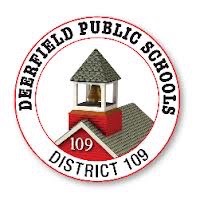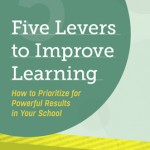“Some people want it to happen, some wish it would happen, others make it happen.”
– Michael Jordan
This post contains content and excerpts from a post originally published May 21, 2014
In DPS109 right now we are going through a number of teacher transitions due to retirements. Over the past two years we have experienced great changes in our District from instructional coaching model changes to leadership changes and transitions, we have and continue to experience a great deal of change and growth. Since last year we have experienced 45 teacher retirements and we have another 36 teachers who have declared retirement over the next four years. Out of a teaching force of 286, this will represent a turnover of at least 28% of all teachers in DPS109 over a six year period!
As I’ve posted in the past In terms of staff selection, DPS109 works with a private company to train and support staff selection and leadership development. This company is one of a few structured selection  human capital management companies. Over the years, in three different districts, I have been part of a “client partner” relationship, and for several years I was a senior executive trainer for the company as well. With this work (on hold at the present time) I get to act as a “practitioner scientist” in terms of practicing and implementing research based practices in search of excellence.
human capital management companies. Over the years, in three different districts, I have been part of a “client partner” relationship, and for several years I was a senior executive trainer for the company as well. With this work (on hold at the present time) I get to act as a “practitioner scientist” in terms of practicing and implementing research based practices in search of excellence.
I have spent the better part of the last decade honing skills at selection and development of talent. I have trained and supported implementation of structured selection with leaders around the country and here in the district. Our leaders conduct structured interviews every month as a regular part of their work so their skills stay sharp and so when vacancies arise we have multiple already “screened” candidates in the application database.
Our search for excellence is a regular part of our work. Our high expectations for and of excellence permeate all of our work. Our structured selection instruments/interviews allow us to manage the thousands of active applications in our job application database  as we screen in the applicants with the highest predictive validity metrics. While we search for excellence, we have science to back up the work. With fidelity to our process, with structured selection as well as resume review, essay review and fit interviews with input teams, we can predict, with up to 88% (.88) certainty that our chosen candidate will be excellent in the particular role.
as we screen in the applicants with the highest predictive validity metrics. While we search for excellence, we have science to back up the work. With fidelity to our process, with structured selection as well as resume review, essay review and fit interviews with input teams, we can predict, with up to 88% (.88) certainty that our chosen candidate will be excellent in the particular role.
The structured interview helps increase this validity by between .23 and .50 … without scientifically based interview instruments, traditional unstructured selection yields about a 30% (.30) predictive validity. See chart modified from the original:
Validity of Various Assessment Tools from: Schmidt, F., & Hunter, J. (1998). The Validity and Utility of Selection Methods in Personnel Psychology: Practical and Theoretical Implications of 85 Years of Research Findings. Psychological Bulletin, 124, 262-274.
Structured Interviews .51
Reference Checks .26
Training & Experience Point Method .11
For more sources from the US Government Office of Personnel Management, click here: http://apps.opm.gov/ADT/Content.aspx?page=RelatedDocuments
While no system is perfect, we are proud of our systems for selection and development of talent at all levels, administrative, frontline support personnel, teaching staff, etc. We have high expectations for our students, staff, administrators, vendors, partners, everyone with whom we work.
As we seek candidates for our posted vacancies at the time of this post, as we work within and from without to search for the right best fit for each position, we are proud that like the U.S. Air Force, we Aim High!
The competition for teaching positions is at an all time high – for example, right now we have more than 3000 (yes, more than three thousand) active and complete applications in our database.
With all that we have going on as we prepare to bring to closure this pretty amazing school year, we like to take the time to celebrate and share and educate with respect to how we do what we do and how we practice the tenets of our mission Engage, Inspire, Empower – each and every day!


